
 |
William Shakespeare: Seine Zeit - Sein Leben - Sein Werk
[William Shakespeare: His Time - His Life - His Work]
b. Rezensionen und Stellungnahmen /
Book reviews and comments |
Book review by the German Anglicist and Shakespeare scholar Professor
emeritus Dr Kurt Otten, University of Heidelberg, Visiting Fellow, Clare
Hall, Cambridge University, in: Anglistik. Zeitschrift des Deutschen
Anglistenverbandes (September 2004) - Excerpt:
Until now it could be assumed that principal new discoveries
about Shakespeare’s life could not be expected. But the present
biography by the Mainz Shakespeare scholar Hildegard Hammerschmidt-Hummel
interlinks the older material with new important findings from the perspective
of Catholic resistance in [Elizabethan and Jacobean] England so convincingly
that it leads to a thorough new interpretation of Shakespeare’s
life viewed from the standpoint of the struggles of conscience in the
age of Reformation. The author opens up unexpected but plausible views
on the complete work, which, hitherto neglected, disclose astonishing
connections and political circumstances of the time. In doing so, she
made use of the latest technological possibilities and methods of historical
and cultural historical research, cooperating with important public personalities,
selected institutes, scientists and specialists of related disciplines.
The names range from Queen Elizabeth II, outstanding private collections
of aristocratic country seats, archivists, Renaissance scholars, art and
costume historians, criminologists, archeologists, heraldic experts, curators,
physicists, experts of photogrammetry, architects, cartographers, gynaecologists
and other medical experts, biologists, botanists and lawyers down to literary
scholars and philologists.
To some readers the author’s attempt to interlink
anew Shakespeare’s work with his time and a new and comprehensive
biography may seem too motley and polypragmatic but from the wealth of
detailed, newly interpreted and interlinked observations a carefully reconstructed
picture is created and a fascinating interpretation of Shakespeare’s
life and literary work against the background of the (for Elizabethan
Catholics) rigid reality of religious policy.
At first the author deals with the reasons for the gaps
and misunderstandings of former biographers. Shakespeare’s life
in London is relatively well documented, but many findings and details
were removed by zealots during the republic of Oliver Cromwell and even
before, partly because of political and religious prejudices. Others got
lost through negligence. Why is it that this should have happened to Shakespeare
of all people? Could the poet’s resistance towards the crown’s
religious policies have played a major part in this?
In the province and the neighbourhood of ancient and
influential Catholic country seats the poet’s personality was already
coined in his youth, as the author illustrates. Hitherto this had only
been presumed. The fate of his parents as persecuted adherents of the
forbidden ‘old faith’ was seminal for the poet’s religious
and philosophical views. Up to now it had practically not been made accessible.
...
By marrying Mary Arden, John Shakespeare had married
the daughter of a respected Catholic country gentleman and officiated
as chamberlain, alderman, bailiff (mayor) and justice of the peace. Then
the abrupt break of his career, for which, according to the author’s
investigations, his secret affiliation to the Catholic religion accounts
for.
...
John Shakespeare had employed and paid secret Catholics
as teachers of the Stratford Grammar School several times - obviously
in agreement with the Stratford town council. Later these teachers became
prominent Catholics and Jesuits in exile and founded abroad seminaries
for the sons of the Catholic English gentry and bourgeoisie. William Shakespeare
and his schoolmates were taught by such teachers, who contributed decisively
to the astonishingly successful re-Catholicising of England.
The father’s mortgaging of a house and lands, the
amount of his pecuniary penalties and an entry in the Douai diary, deleted
only in the 19th century, point to the fact that John Shakespeare had
sent his son to the Collegium Anglicum which had adopted the Jesuit concept
of education. For it was depressing for English Catholics that their sons
were excluded from the (English) universities because of the compulsory
oath of supremacy, which was incompatible with their conscience.
If William Shakespeare left Stratford in 1585 hastily,
this is now less due to the legend of his poaching rather than - and more
conclusively - to his flight from the hunter of Catholics and justice
of the peace Sir Thomas Lucy, who is later skilfully ridiculed by the
playwright. Prior to that he had been employed as a private teacher by
the distinguished aristocratic family of the de Hoghtons in Lancashire
under the name Shakeshafte (E.A.J. Honigmann) and, as the author could
prove, had committed himself to actively participate in the resistance
that aimed at re-Catholicising England. Up to the end of his life Shakespeare
held firmly to these principles.
Both gatehouses of the former London cloister Blackfriars
were devoted to the service of English crypto-Catholicism. There Mass
was said regularly and cure of souls pursued. And it was there that persecuted
Catholic priests and believers were sheltered and received aiding and
abetting of an escape. In 1613, Shakespeare purchased the eastern gatehouse
of Blackfriars, through which, among others, the Jesuit priest John Gerard
could escape his hunters after the Gunpowder Plot (1605). Hitherto scholars
had inquired in vain into the commercial benefit of this Shakespearean
accession.
Lancashire and Warwickshire were Catholic isles in a
Protestant landscape. With great probability, Shakespeare could have spent
the seven ‘lost years’ (1585-92), about which nothing was
known before the author’s researches, at the Collegium Anglicum,
which at that time was based at Rheims, and making visits to Rome, the
dates of which the author was able to establish because of the pseudonyms
Shakespeare had used in the pilgrims’ hospice of the English College
at Rome. This would account for Shakespeare’s superior theological
and mundane education, his knowledge of patristics and legal practices,
but also his being well grounded in French and the true to life scenarios
of his plays, set in the cities of Upper Italy.
The explosive conclusions the author has already drawn
in her book on Shakespeare’s hidden existence (Die verborgene Existenz
des William Shakespeare) (2001) - because of her presentation of spectacular
new sources or sources that she has made newly accessible - are now confirmed
in an amazing way by two further documents from Shakespeare’s lifetime,
independent of each other, which she has (re-)discovered. These concern
the poet’s activities in the Catholic underground, his travels to
Rome and others. Now we know what kind of employment he pursued during
the ‘lost years’ (cf. pp. 68-71) and are informed about his
lodgings on the Continent (cf. p. 165).
For the new image of Shakespeare, now present, pioneering
methods of modern historiography were convincingly employed. At the beginning,
there was the process of identifying the Darmstadt Shakespeare death mask.
Contrary to many expectations, the mask proved to be genuine and to be
the model for Shakespeare’s funerary bust at Stratford-upon-Avon,
after having undergone a criminological test of authenticity executed
by the German Federal Office of Criminal Investigation and employing the
latest technology. It was a discovery of the first order. By cooperating
with medical and arthistorical experts, it allowed further insights into
Shakespeare’s illnesses and secure knowledge about the hitherto
disputed interdependences of Shakespeare portraits and the benefits of
knowledge derived from them.
In addition, the author succeeded in proving Shakespeare’s
friendship with Henry Wriothesley, Earl of Southampton, and his close
connection with the court circles of Elizabeth I. She disclosed the mystery
of the ‘Dark Lady’ of the sonnets, the Lady Elizabeth Vernon,
a lady-in-waiting to the queen, and her relationship with Shakespeare
and his high-ranking friend, who won the favour of his (Shakespeare’s)
mistress and replaced him. The Earl of Southampton had been the longstanding
friend and patron of Shakespeare and his theatre company. This identification
also proved the hitherto disputed self-testimony of the sonnets to be
true. Thus the sonnets allow us to gain an insight into Shakespeare’s
emotional life at the time of origin of this poetry and demonstrate the
open and courageous literary representation of a ménage à
trois, which scholars hitherto would never have thought the poet or his
noble friend capable of doing with such uprightness and which they would
not have thought possible within the framework of the then valid concept
of virtue or tolerance of the Elizabethan aristocracy. The late Oxford
historian A. L. Rowse had already provided us with some partial findings.
He suspected that the high-ranking friend was Southampton. Highly pregnant,
Elizabeth Vernon was expelled from the Court in the summer of 1598. She
married the Earl of Southampton and left behind the proud picture of the
pregnant ‘Persian Lady’, then a daughter, who bore Shakespeare’s
facial features, and a hitherto unpublished Shakespeare sonnet - a brilliant
way of giving evidence by the author.
This personal experience, which moved the poet, is -
as the author demonstrates - closely connected with an event of Elizabethan
contemporary history which took a tragic course for Shakespeare and the
English Catholics. Southampton was thought of as a radiating figure. He
was - as Essex - the pride and joy of the court, according to the concept
of the gentleman in Cortegiano: ‘The courtier’s, soldier’s,
scholar’s eye’ (Hamlet, III, 1). He failed politically and
as a human being because of court intrigues - just like the Earl of Essex.
On the latter the ‘commons’ and Catholics had placed their
expectation, as far as the future of England was concerned. Essex - Shakespeare
was his enthusiastic adherent - became the model for Hamlet. Southampton,
his closest friend, stood by his side at the time of the rebellion in
the year 1601. Essex’s condemnation and his execution as a traitor
as well as Southampton’s death sentence that was turned into life
imprisonment now throw a new light on Shakespeare’s tragic phase.
For a long time scholars have rightly discussed the general darkening
in the plays - immediately after the turn of the 17th century. After the
failure of the Essex rebellion, in the eyes of Shakespeare and the English
Catholics, the great political hopeful (Essex) had died, who stood for
reconciliation and religious tolerance. It has long been assumed that
Denmark in Hamlet meant England, that Hamlet in the sense of sonnet 66
would have to be regarded as Shakespeare’s personal evidence and
that Polonius is modelled on Lord Burghley (=William Cecil), but only
in the author’s biography on Shakespeare these connections prove
to be part of the historical reality.
In all of Shakespeare’s works the bitter experiences
of the crisis year 1601 are echoed, the year of the failure of the Essex
rebellion and of the execution of the political hopeful Essex. In the
allegorical elegy ”The Phoenix and the Turtle”, written immediately
after the condemnation of Essex and published in a small print run for
his adherents, the Shakespeare scholar Hammerschmidt-Hummel has brought
to light all hidden hints on the Essex circle and his political opponents
convincingly. Elizabeth I is encoded as crow and hangman’s bird.
When the queen died (1603), Shakespeare was silent.
Some of the material the author had published previously
(cf. Die verborgene Existenz des William Shakespeare / The hidden existence
of William Shakespeare, Freiburg im Breisgau: Verlag Herder, 2001). Now
this has become one of the central points of reference of her Shakespeare
biography and of the origin and interpretation of Shakespeare’s
works against the background of the rigid scenarios of contemporary history
and religious policies under Elizabeth I and James I.
...
Hildegard Hammerschmidt-Hummel, in a well thought-out,
clearly structured process of historical documents and as a lively experience,
has reconstructed Shakespeare’s singularity in connection with the
age of the great Tudors and the first Stuart king. Her evaluations will
not remain undisputed, but they are a basis from which we can think ahead.
She has managed to gain a magnificent success. She has given a decisive
work to the humanities whose pluralism has become increasingly questionable,
a work by which not only a single discipline can orientate itself but
also a big reading public. To put it in a nutshell: In this biography
on Shakespeare on a scholarly basis - it is the very first in the German
language - the reader will find everything he always wanted to know about
Shakespeare and of which he believed that no one would ever find out about.
In the meantime we do speak again of an educational canon: This pictorially
and lexically very well equipped work, which also has a comprehensive
chronological table, is part of that canon and an absolute must.
(With kind permission of the editor of Anglistik: Professor
Dr Dr h. c. Rüdiger Ahrens, University of Wuerzburg, e-mail: ruediger.ahrens@mail.uni-wuerzburg.de)
*****
|
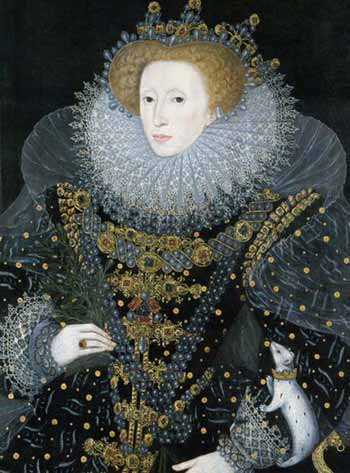
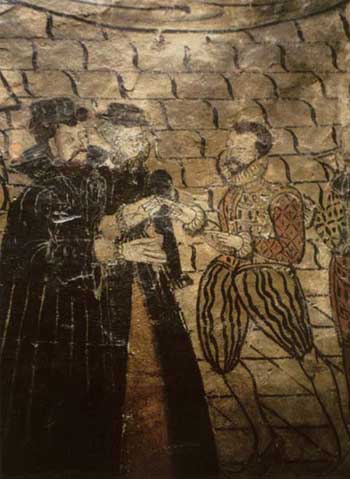
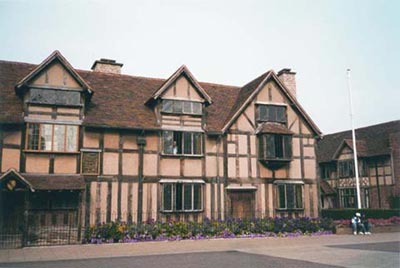

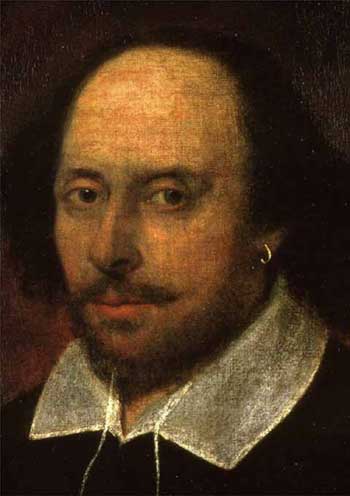
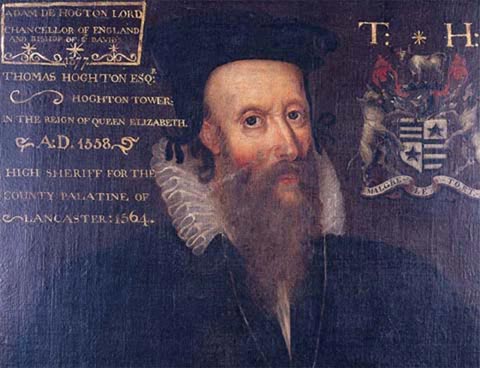


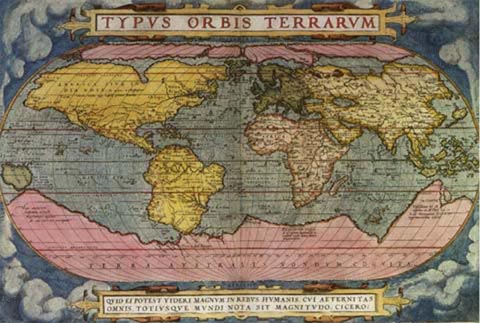
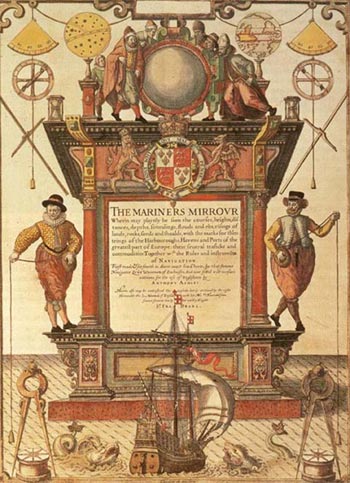
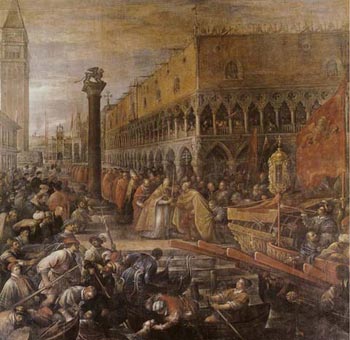

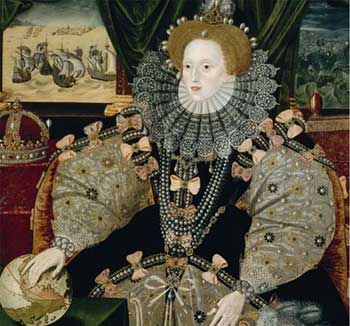

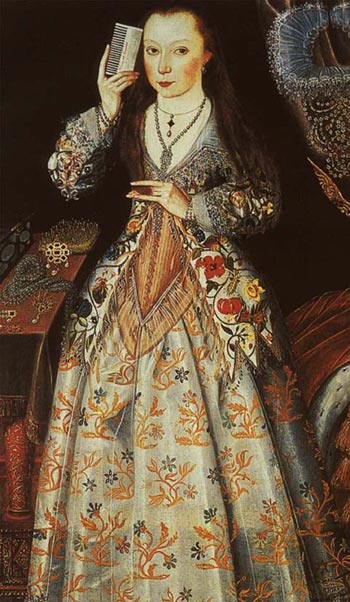
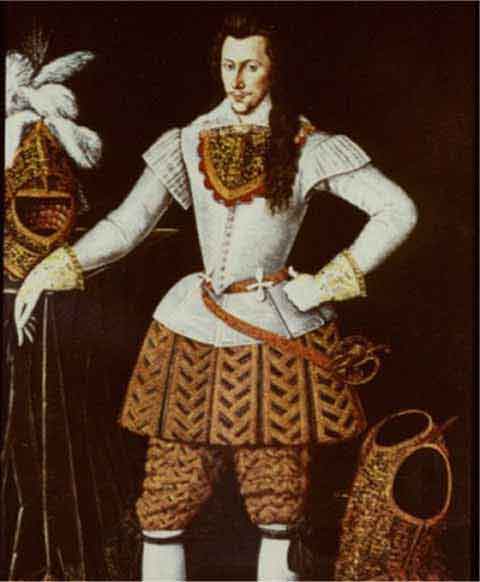

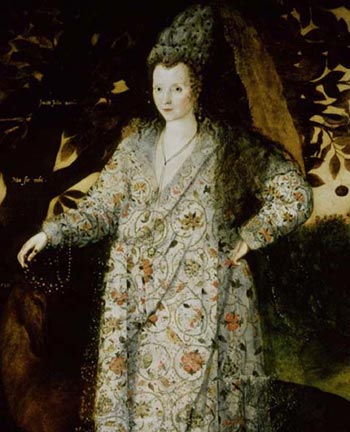

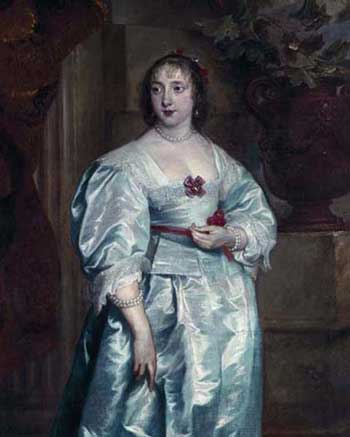


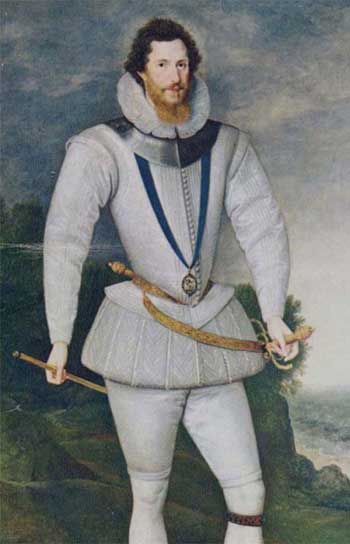
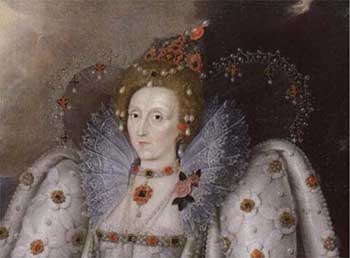
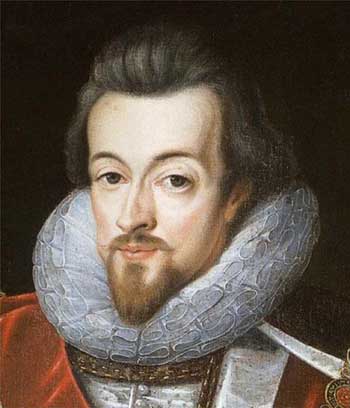

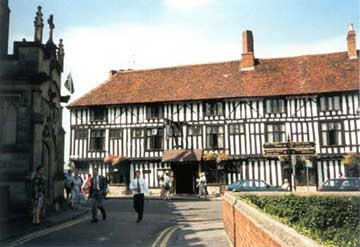
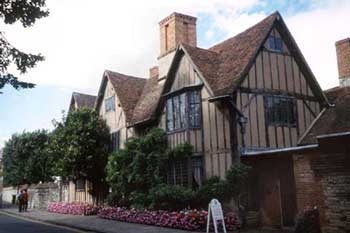
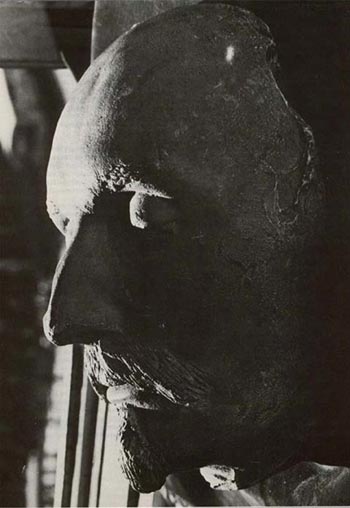


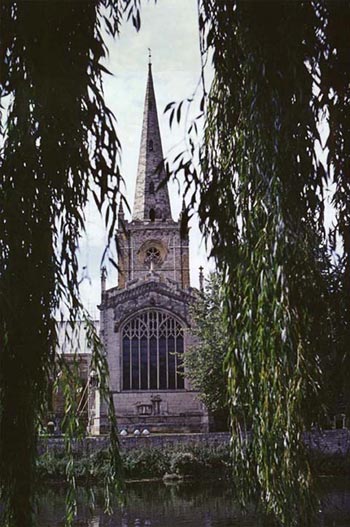


|


































